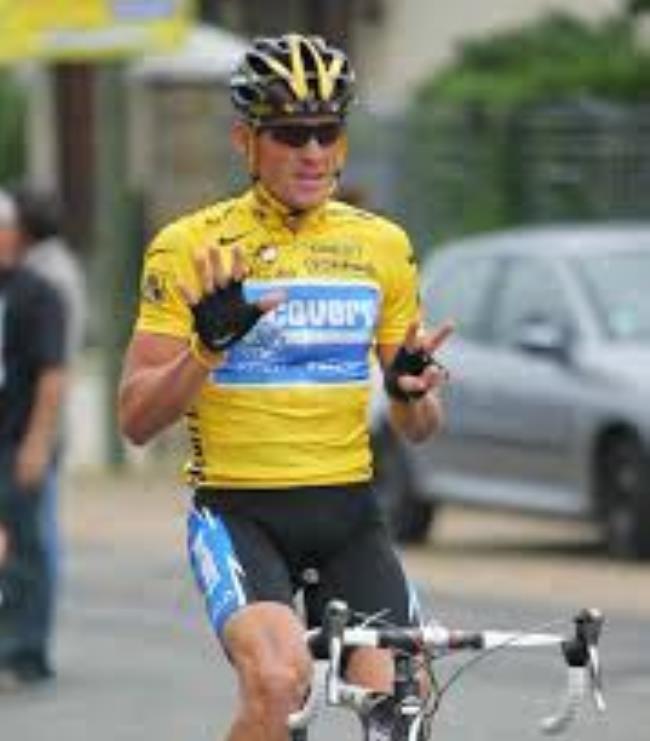|
I was watching the Tour de France on Tuesday morning as it swept through the city of Charleroi, in Belgium.
My mind went back to a nasty morning in 2004, at a staging area in the very same Charleroi, when I had a taste of the grim war being fought by Lance Armstrong’s minions. Totally by coincidence, I am reading the new book about the battle of Waterloo, by Bernard Cornwell. Another conqueror also passed through Charleroi that fateful month of June, 1815. His name was Napoleon Bonaparte. So now they are fused in my mind, the man on horseback, the man on the bike. As the Tour began in 2004, a new book came out, “L.A. Confidentiel: Les Secrets de Lance Armstrong,” by David Walsh and Pierre Ballester, containing many accusations of doping by Armstrong and his team. The book was only in French. I bought a copy at the Brussels Airport and was reading it as the Tour began in Liege. One of the most convincing sections was about an Irish masseuse, Emma O’Reilly, who recalled how Armstrong had tested positive for steroids in 1999, only to have a doctor file a note saying Armstrong had been using a form of steroids to combat saddle sores, an occupational hazard. If anybody knew whether Armstrong had saddle sores, it would be his masseuse, O’Reilly said -- and he did not. She described the panic in the Armstrong bus about the positive test, until a servile world cycling federation accepted the doctor’s ludicrous note, and Armstrong pedaled onward. I alluded to the negated positive. It did not go un-noticed. That drizzly morning in Charleroi, Armstrong’s lawyer-manager, Bill Stapleton, sought me out as we enjoyed coffee and croissants before the day’s stage began. He pointedly told me that Lance had never tested positive. Yes, he did, I said, for steroids. That was not a positive test, he said. I understood his legal point but more important I realized, these people are serious, and they are going to fight on every point. We all know how that ended, years later, with Lance’s confession on Oprah. I think about him while watching the Tour. I saw him win his last three titles. He was the greatest rider of his time. I suspect just about all of them cheated. I hear he has downsized, in his own private St. Helena. Napoleon also held a staging area around Charleroi, 200 years ago. He had come back from exile and had re-claimed much of the French army and was convinced his decisions would always work out. He would feint one way, go the other way, and rout the English and the Prussians. . But they stood up to him, in terrible fighting, on the road north in an area known as Waterloo. In July of 2004, I spent several nights in a motel near the battlefield but never had time to visit it. I was reading “L.A. Confidentiel” and riding in a press car with two copains and getting the cold eye from Lance’s perimeter defense. 7/9/2015 11:06:05 am
An interesting comparison of two great egos that eventually got their comeuppance.
TheRaceRadio
7/13/2015 03:37:04 am
Alan, I have to agree with you. Riding with him just became intolerable. Betsy and I saw too much.
George Vecsey
7/9/2015 02:55:53 pm
Alan, we read the same books....having taken three years of ROTC, I love the details of the battles, outmoded now. The virtues of the column vs. the line -- rudimentary weapons, the limits of cavalry that cost the French dearly. For all that, Cornwell's writing is clumsy. He changes tenses from paragraph to paragraph. Massie's descriptions of battles involving Peter and Catherine's armies are so much better, But the military details here are terrific. Best, GV
Sean Kelly
7/10/2015 02:54:35 am
Much like Napoleon's first exile to Elba, Armstrong is still too close for comfort. I'd love to see the disgraced pissant live out his days on St. Helena - without reporters or internet. Though I doubt the French would want to move his body to Paris and entomb him in the Hotel des Invalides when his days are over. Perhaps they could bury him in a dog park in Plano where generations of canines can give him the sort of "salute" he deserves.
George Vecsey
7/10/2015 07:14:24 am
Dear Sean: You are not the great Irish cyclist I watched in 82-83 when I was on the Hinault-Jonathan Boyer watch? I was always grateful to Kelly and Phil Anderson and Boyer for some English.....
TheRaceRadio
7/13/2015 03:49:04 am
Exactly George. This is not the real Sean Kelly who would be far too classy to comment like this. This is one of my tweet bots.
bruce
7/11/2015 03:34:54 am
George,
George Vecsey
7/11/2015 05:49:39 am
Bruce: Waterloo, Ontario???
bruce
7/11/2015 06:06:10 am
george,
bruce
7/11/2015 06:11:45 am
george,
George Vecsey
7/13/2015 03:55:41 am
That's true. There is the suggestion that he was having treatments during the battle. Unlike Lance.
bruce
7/11/2015 06:18:39 am
george, Comments are closed.
|
Categories
All
|











